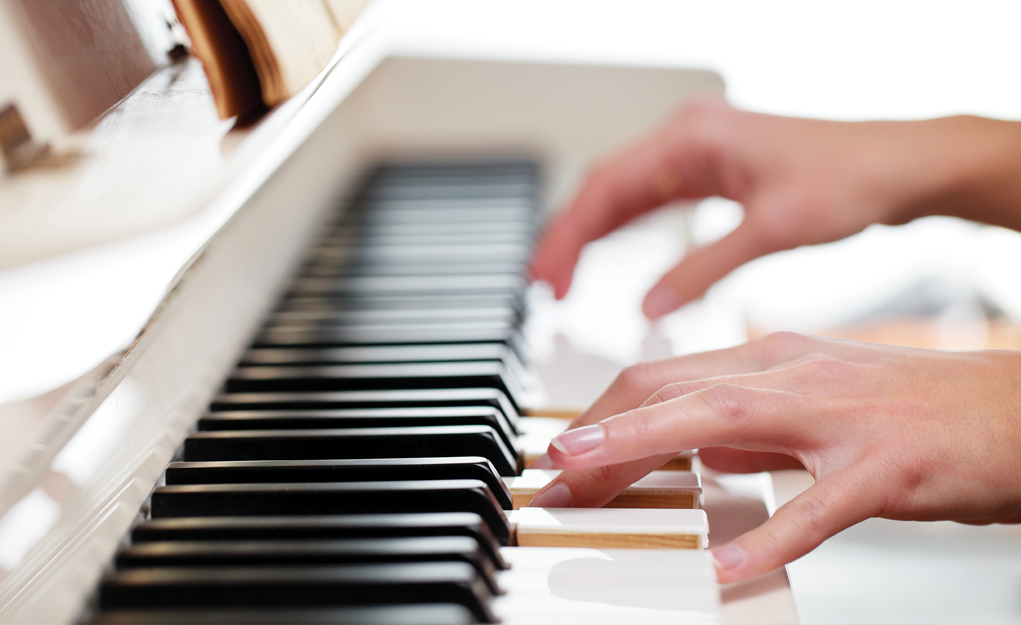While practice makes perfect, repetitive motions, awkward postures and long practice hours required in the pursuit of their craft may result in musculoskeletal injuries in instrumental musicians.

What are the predisposing factors?
Extrinsic factors like sudden increase in practice time or intensity while preparing for a concert or performance can stress muscle tone. Continuous repetition while trying to learn a difficult passage, a change in instruments, different pieces requiring different playing techniques or a change in instructors can cause significant musculoskeletal sequelae.
Pieces that require wide finger stretches in musicians with small hands can cause musculoskeletal strain. Joint hypermobility can lead to pain, fatigue and spasm as the muscles need to constantly overwork to maintain joint stability. Hypermobility can also cause digital nerve compression, traction neuropathies and traumatic synovitis. Other factors include poorly conditioned muscles, poor practice habits, poor posture and muscle imbalance.
What are the common complaints?
Pain is the predominant symptom experienced. Loss of dexterity, cramping, stiffness, weakness, tremors, swelling and clicking are common complaints.
There are three main groups of conditions described: overuse syndrome, nerve entrapment syndrome and focal dystonia.
What is overuse syndrome?
This is the most common affliction of an instrumental musician and is due to repetitive microtrauma from playing beyond the point of muscle fatigue. The symptoms experienced from constant repetition during hours of intense practice is determined by the instruments played — the extensors of the hands, wrists and fingers and the small delicate muscles (lumbricals) of the hand in pianists, the flexors and extensors of the right hand and the muscles involved with ulnar deviation in the left hand of string players.
Treatment is divided into two phases. In the acute first phase, rest is the cornerstone of treatment. Complete rest for a minimum of 12 weeks may be required in severe cases. Relative rest with limited playing of the instrument may be allowed in those with less severe symptoms. Anti-inflammatory medications, physiotherapy, soft tissue massage and splints may be helpful. The rehabilitative second phase begins when the musician becomes pain-free, and the aim is to gradually return to playing. Exercises to stretch and strengthen the muscle-tendon unit are started. They can begin playing but must rest if fatigue or pain returns. Splints or instrument modification — custom chin and clavicle rests for the violin or viola, for example — will also be needed to unload compressed areas, reducing the fatigue and pain seen with overuse syndrome.
What is nerve entrapment syndrome?
This is caused by direct pressure on a nerve, resulting in a pinched nerve — if it affects the median nerve at the wrist, it is known as carpal tunnel syndrome (CTS); if it affects the ulnar nerve at the elbow, it is known as cubital tunnel syndrome. Symptoms will include pain, loss of strength and dexterity, numbness and tingling. As a result, many musicians may experience symptoms only while playing; electrodiagnostic studies are often normal in musicians because their symptoms are commonly intermittent and present only while playing.
Treatment initially will be conservative, involving postural changes, activity modification, splinting, non-steroidal anti-inflammatory medications and steroid injections. Warm up and cool down stretching exercises and frequent practice breaks are necessary. Severe symptoms will require surgery.
What is focal dystonia?
This is similar to writer’s cramp and presents as a painless motor control disorder involving sustained muscular contraction. This leads to twisting, repetitive movements and abnormal posturing that occurs during one complex motor act — such as playing the piano — but not others requiring a similar level of precision. It can involve one or both of the upper extremities. Pianist Robert Schumann suffered from it; so does violinist and violist Pinchas Zukerman. Symptoms almost exclusively occur while playing the instrument and include involuntary movements and postures, stiffness and cramping. The patient must therefore be examined while performing as symptoms may not occur otherwise.
Treatment is difficult and complete remission unpredictable. Technical retraining to correct the maladaptive motor sequence in hopes of developing a more normal pattern is the key. In some cases, botulinum toxin, commonly known as Botox, is injected into the affected muscle to lessen the muscle contractions. Injections may be repeated every three to four months but benefits may be modest. Deep brain stimulation has shown promising outcome but further research regarding the specific areas of the brain that it must target as well as analysing its long-term outcomes must be conducted.







